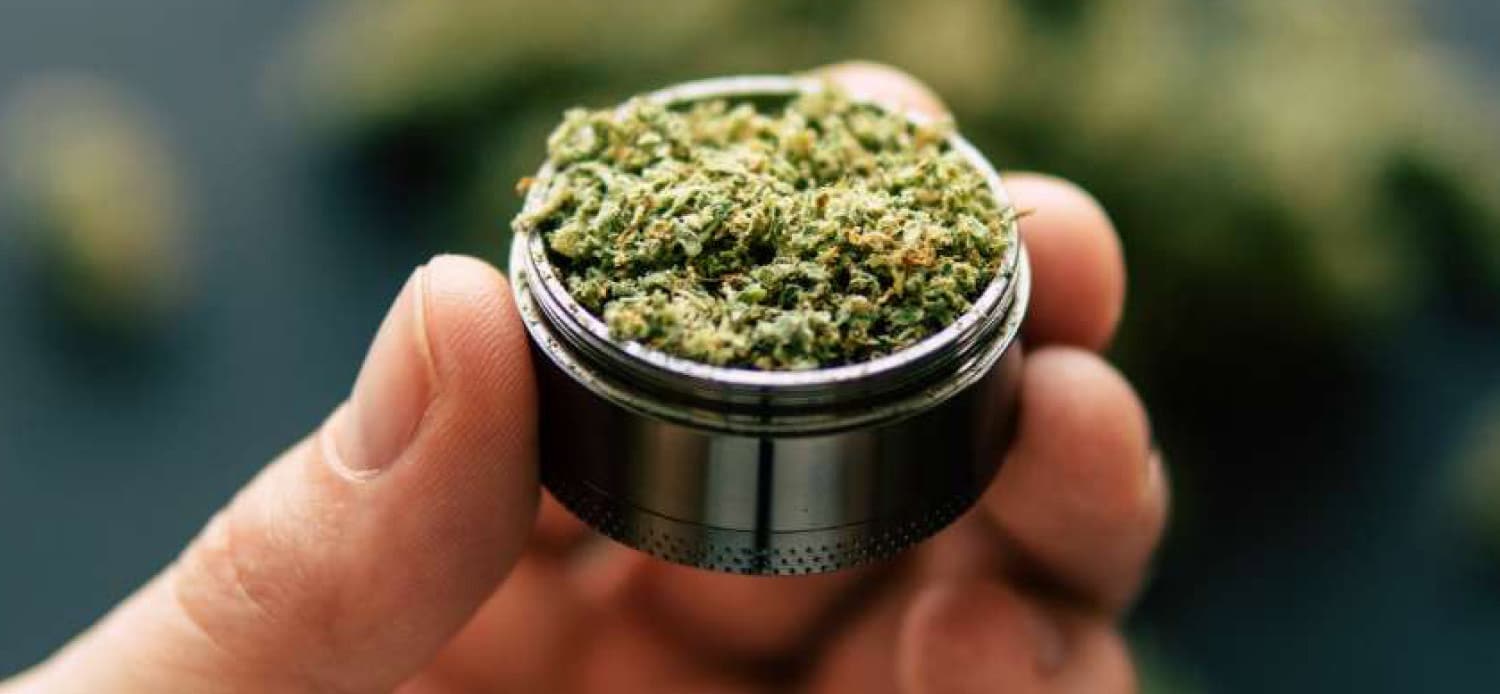
Tetrahydrocannabinol (THC)
Can help treat pain, PTSD, depression, nausea, sleep related issues and much more. Depending on its percentage strength, THC strains can cause psychoactive effects.
Cannabidiol (CBD)
is non-intoxicating. It can help to reduce inflammation, reduce anxiety, relieve pain & can even treat seizures & more.
An Apollo patient educator will use our wealth of knowledge to help you select strains and products with the right levels of the compounds THC & CBD.
Each Patient at Apollo is Unique, Just Like Each Cannabis Strain.
At Apollo, our Physicians and Patient Educators are here to help you navigate the medical cannabis world. We realize not everyone reacts the same way using medical cannabis as treatment, and we are here to help you through that process. We provide you with as much, or as little support as needed.
Some of the topics our Patient Educators will help you understand better can be found below:
CBD and THC
CBD and THC are the two most common chemical compounds found within the cannabis plant.
These compounds can produce various effects, which can aid with a variety of conditions and symptoms.
THC is most commonly known as it is the compound that is known to produce the euphoria associated with cannabis. It has potential medicinal benefits such as reducing depression, aiding with PTSD symptoms and treating pain.
CBD is non-intoxicating and is quickly becoming a popular compound to treat patients with pain, inflammation and anxiety, among other symptoms.
Most cannabis products will contain a combination of THC and CBD as these compounds work best, together, due to a theory called the entourage effect.
Indica and Sativa
With more than 1,000 strains of cannabis having been bred during the past several decades, it is critical that patients are aware of the different types that are available. Some varieties of cannabis are most appropriate for particular diseases and ailments, but not others. Choosing the right strain is critical to ensuring that patients receive the best treatment possible.
Indica and Sativa plants differ not only in their physiological effects, but also in their appearance. Indica plants are more short and stocky, featuring leaves that are broad and wider, while Sativa plants tend to be taller and skinnier and may even be lanky in appearance, with leaves that are thin and pointed.
The most important difference between these two subspecies of cannabis, however, is in their potential medical effects. Indicas tend to be more relaxing, both physically and mentally. Indica strains are often recommended for use in the evening after the conclusion of the day’s work and activities.
Sativas, on the other hand, are generally thought to be uplifting and cerebral, enhancing creativity and productivity.
To ensure you are getting the right cannabis varieties and strains for you, it is recommended to always consult with a medical professional.
Patients should never trust or consume cannabis medicine without knowing its exact strain and that it was properly grown, dried, cured, and laboratory tested for purity and potential contamination.
Terpenes
Terpenes are found in various cannabis strains and a large array of other plants. Each terpene contributes to the plant’s aroma, texture and flavour. Each strain contains its own specific range of terpenes, which add their own unique properties. Terpenes may also modify a strain’s medicinal properties.
While there are many more terpenes than the ones listed below, some of the most prominent and common terpenes in cannabis strains include the following:
Caryophyllene: Common in two main forms, beta caryophyllene, also commonly seen as β-Caryophyllene or abbreviated to BCP, and trans-caryophyllene or TC. Aside from cannabis, this terpene can be found in clove, black pepper and cotton.
Humulene: Found naturally in ginger, hops and sage, this terpene is known for its earthy, woody aroma and flavour.
Limonene: Known for its citrus aroma and flavour, this terpene is found in high concentrations in citrus fruit rinds, juniper, and rosemary.
Linalool: This terpene is found in many flowers and spice plants, such as lavender, coriander, and basil – which explains its floral scent.
Myrcene: The smallest of all terpenes and yet the most abundant in cannabis, Myrcene can be found in mangoes, hops and thyme. It produces a spicy, balsamic flavour and aroma.
Pinene: A terpene found primarily in cannabis and conifers, which smells strongly of pine.
Myrcene, the most common terpene in cannabis, is known to help patients sleep, battling conditions like anxiety and insomnia. If present in a specific strain in a volume greater than 0.5 percent, the strain is considered an Indica. If the amount of Myrcene is under one half of one percent, then the strain is deemed a Sativa.
Cannabis Consumption Methods
Smoking
Smoking the dried flower from the cannabis plant is a common method of ingestion, but is not reccomended by Apollo or Health Canada due to the health risks of smoking.
The smoke generated from burning papers and lighter fluid chemicals contain carcinogenic compounds. Users with compromised immune systems or lung problems should consider other methods of cannabis.
Patient Starts to Feel Effects: Within seconds of inhalation.
Duration of Effects: Effects usually peak around 30 minutes and can last between couple of hours.
Benefits of Smoking: Generally regarded as the quickest and most effective way to feel instant relief from symptoms.
Drawbacks of Smoking: The smoke generated from burning papers and lighter fluid chemicals contain carcinogenic compounds. Users with compromised immune systems or lung problems should consider other methods of cannabis.
Vaping
A smokeless, efficient form of inhalation. The process of heating dried cannabis to a temperature below its combustion point of 392°F. The dried cannabis flower is only heated to the point where the desired cannabinoids (typically found in the resin of the flower), are released without igniting/destroying the material.
Patient Starts to Feel Effects: Within seconds or minutes inhalation.
Duration of Effects: Effects usually peak around 30 minutes and can last between couple of hours.
Benefits of Vaporizing: Known as one of the safest ways to consume dried cannabis flower, for instant relief. Minimal odor, which dissipates quickly. Portability or home units are available for convenience.
Drawbacks of Vaporizing: Vaporizing dried cannabis is a short-acting method of consumption and may only provide relief for a few short hours. Patients looking for longer-acting symptom control may wish to consider combining vaporizing with other forms of administration.
Edibles/Oils
Cannabis in edible form has been a popular method of consumption since the 1960s. The cannabinoids are believed to be metabolized in the liver, which converts THC into another chemical, 11-hydroxy-THC.
Currently, patients can choose to order edible cannabis oil from their Licensed Producer. These oils are measured using a syringe, and then placed under the tongue or swallowed. Patients may choose to eat their oil on a spoonful of yogurt, or piece of toast for example, if preferred.
Cannabis oil can also be made into pre-dosed capsules, available for purchase from licensed producers. Many patients find capsules very convenient, and just as easy to administer as a traditional pharmaceutical.
Edibles, on the other hand, are food and drink items which are infused with cannabis. Edibles such as chocolates, beverages, and gummies are not yet regulated or available on the legal medical cannabis market in Canada. As such, many patients choose to make their own cannabis infused edibles.
Patient Starts to Feel Effects: 45 minutes to two hours depending on the patients metabolism.
Duration of Effects: Depending on the dosage used, generally 6-8 hours.
Benefits of Edibles: Effects last longer than most other forms of cannabis use. One the most discreet and convenient forms of consumption. Diverse variety of options available.
Drawbacks of Edibles: Edibles are not ideal for users who need immediate relief as the effects take longer to commence. Finding the right dose and correct way to prepare cannabis for indigestion can be difficult. Some patients complain they do not like the taste of cannabis infused products.

